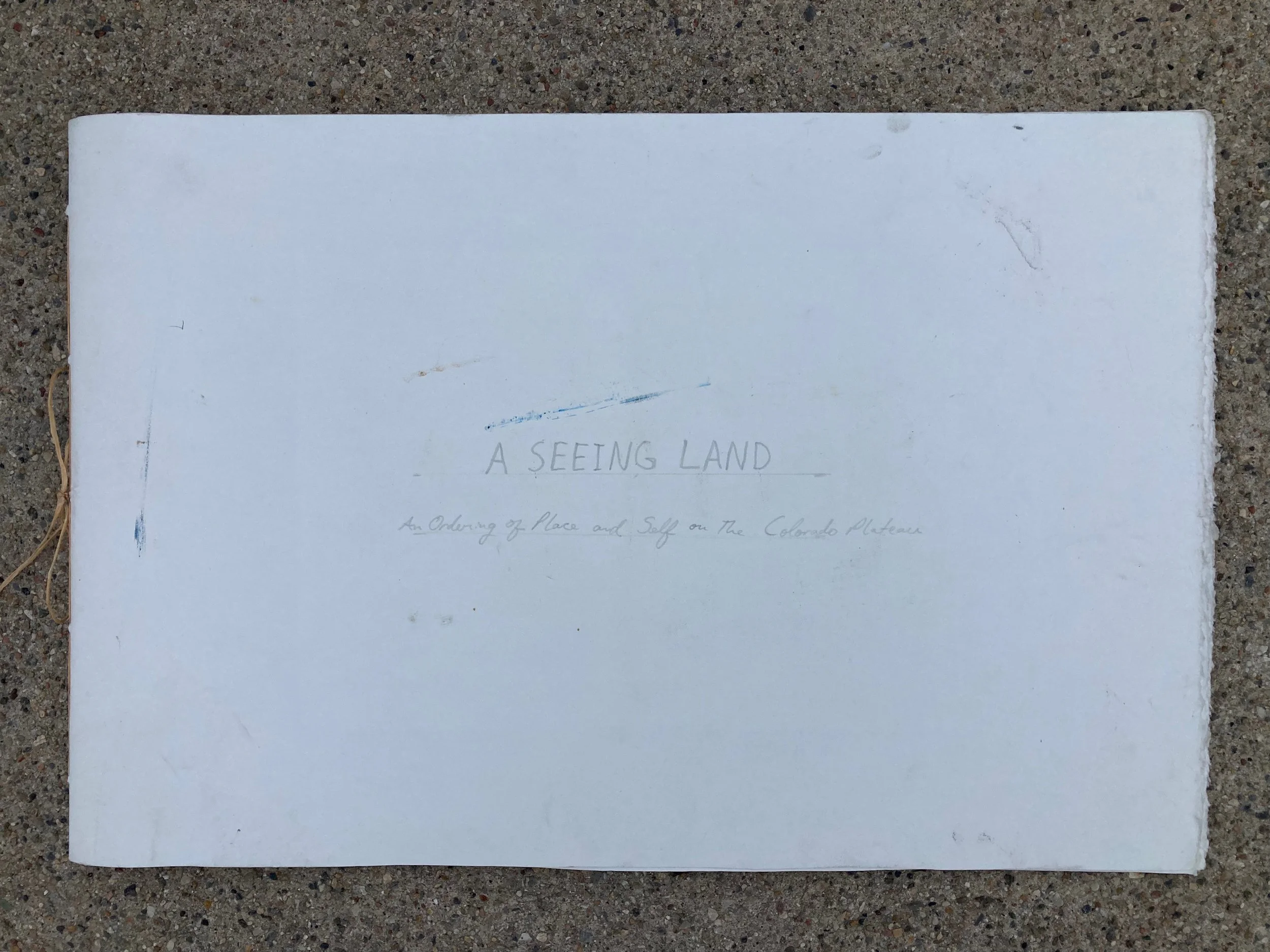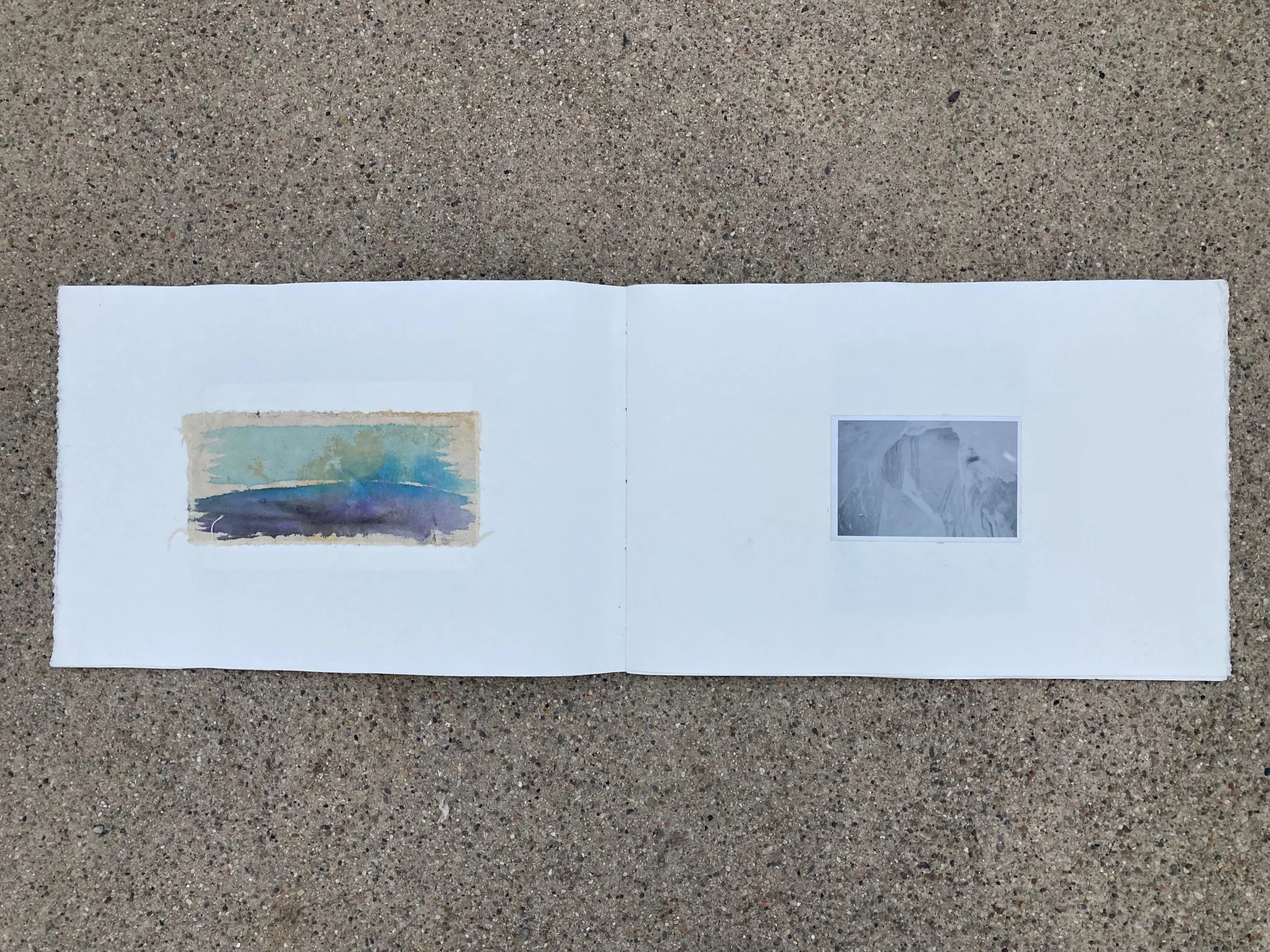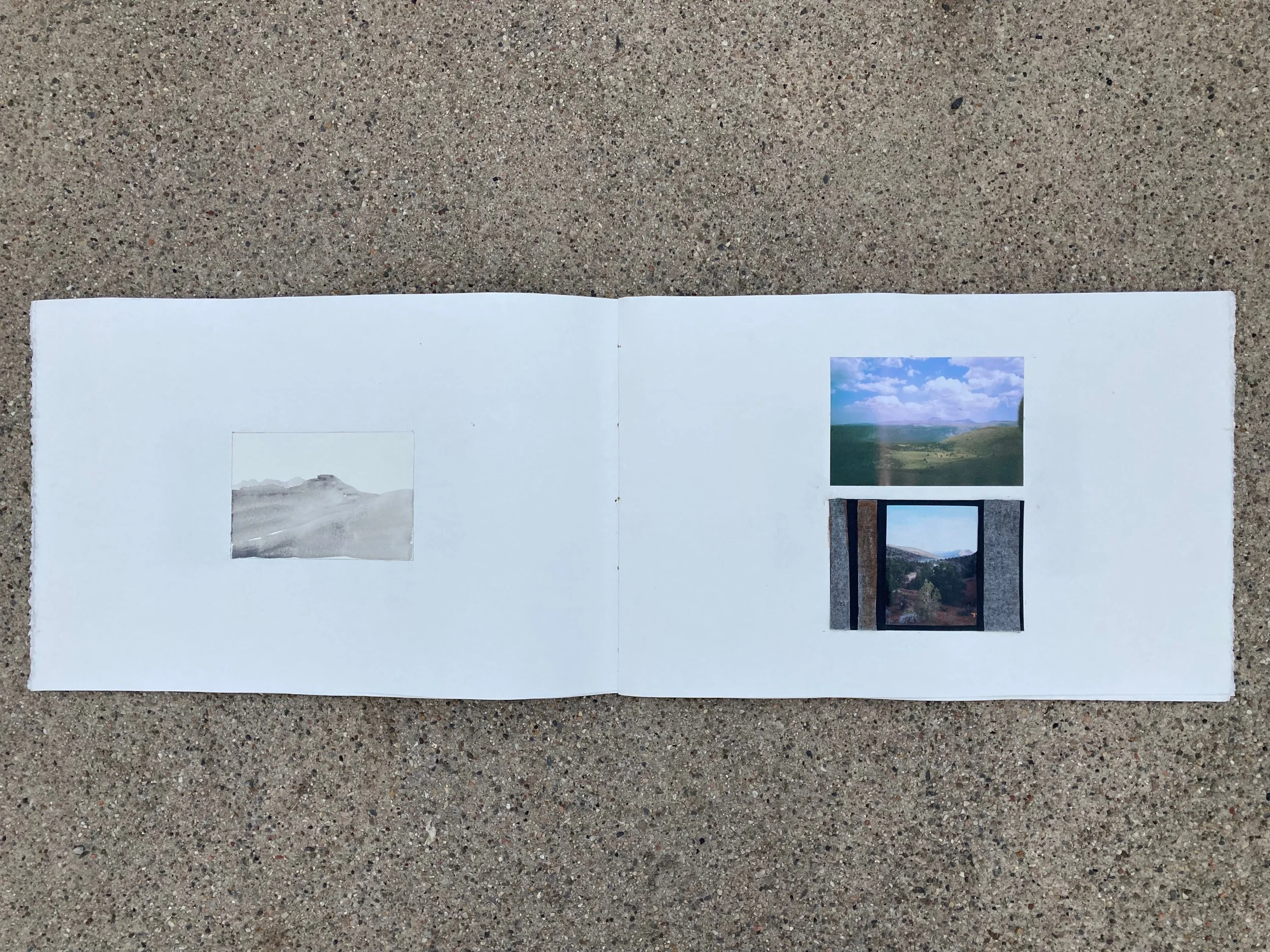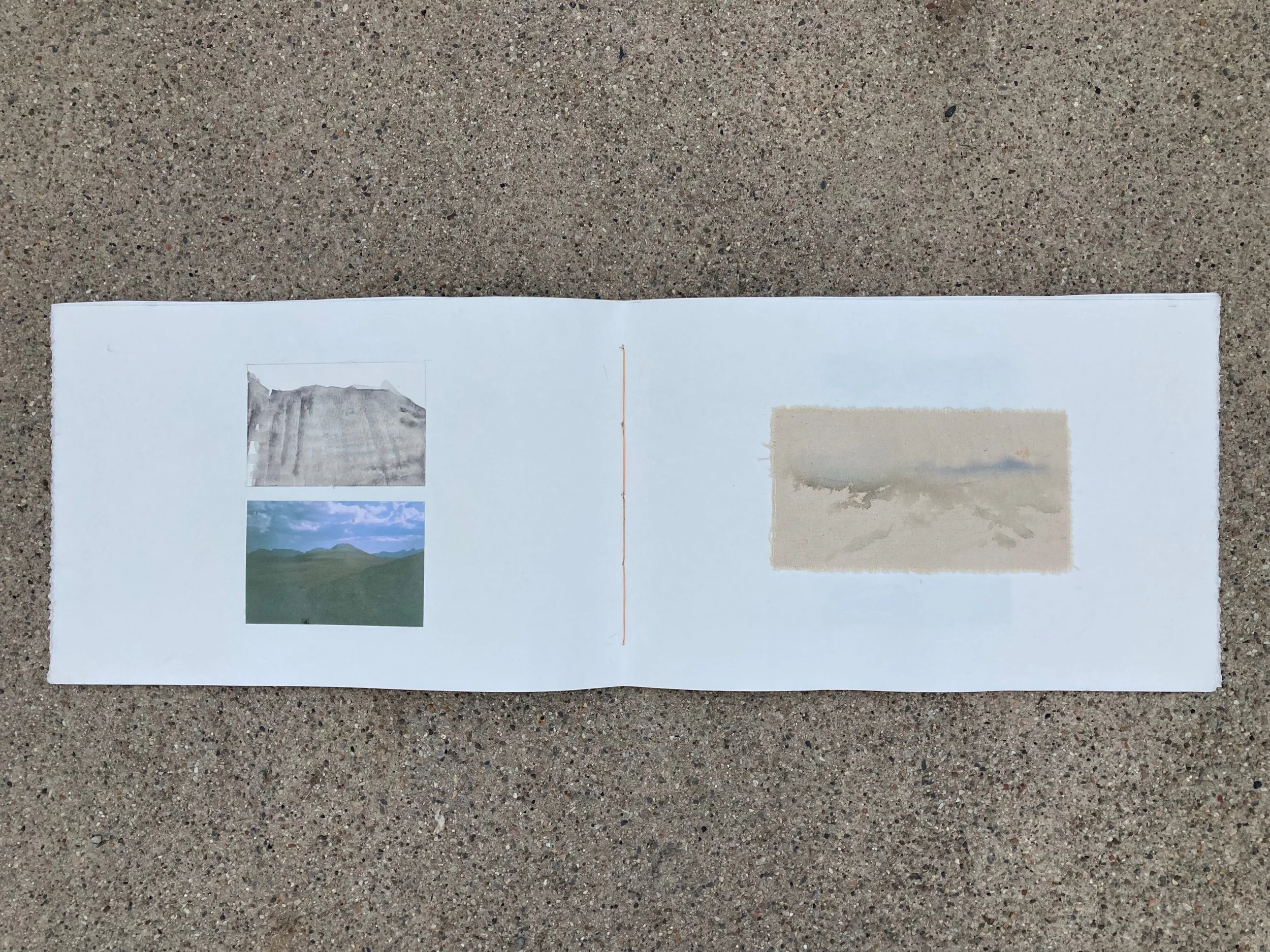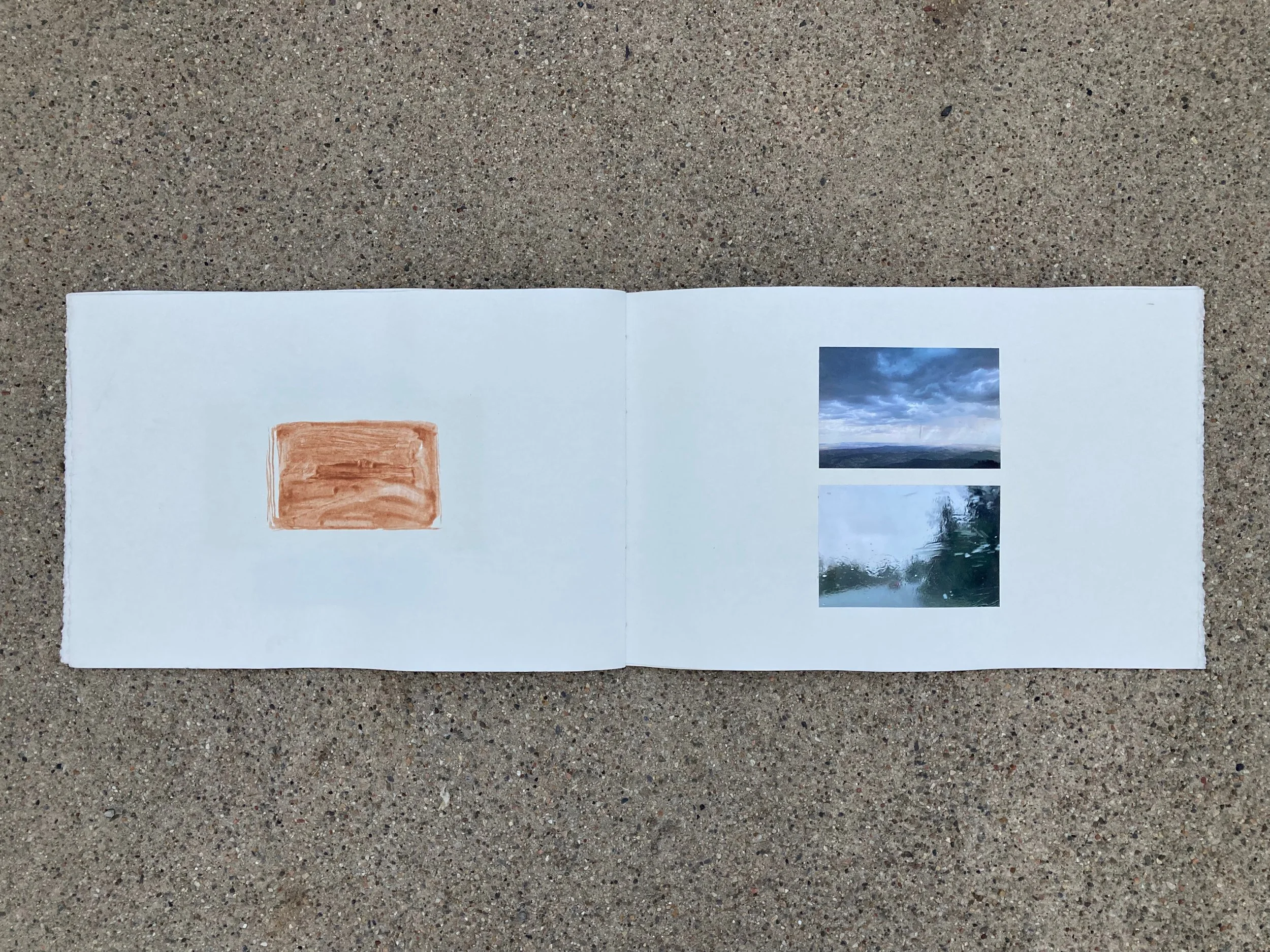The intention behind A Seeing Land was to put images next to each other which I felt were related in particular ways but which would never appear to be related outside of my juxtaposition. And I wanted to do it without questioning myself, without judging myself. I put virgas next to desert varnish. I put photos of flash floods next to drawings in which the selfsame mud is used. I put observed renderings next to invented horizons. As if to say: “There is a line that connects all these things.” It’s not the only line that connects these things. It’s not an ultimate ordering. But it’s MY ordering. It’s the way I see the world. It’s what I have to say about a particular place, my home, the Colorado Plateau.
The process actually felt good for a change. I enjoyed it. I dialed the scope of my effort back from the universal to the individual, aware that I can’t know a whole lot more than what I can perceive while simultaneously suggesting through my juxtapositions that I could really be onto something. After all, I’ve spent a lot of time walking around the desert. I could be wrong, but I say “Look!” anyway. Look at the ways these images are connected. Look at the ways these desert landscapes appear to function. Look at the repeating forms. And then also see when they don’t repeat, when patterns break down. See where my knowledge ends.
I hope that this piece decenters all vantages while respecting them all equally. I want it not to decenter the human exclusively—as my previous work has done—but instead to bring the human into communion with other viewpoints just as valid. To center and decenter all equally. To say that it is not the human who is to blame for our current problems, but ideas humans have created. There is innate good and innate bad in all things. We are all connected.
This process is comforting for me. I feel settled in it. And that’s something that hasn’t happened in a long time.
